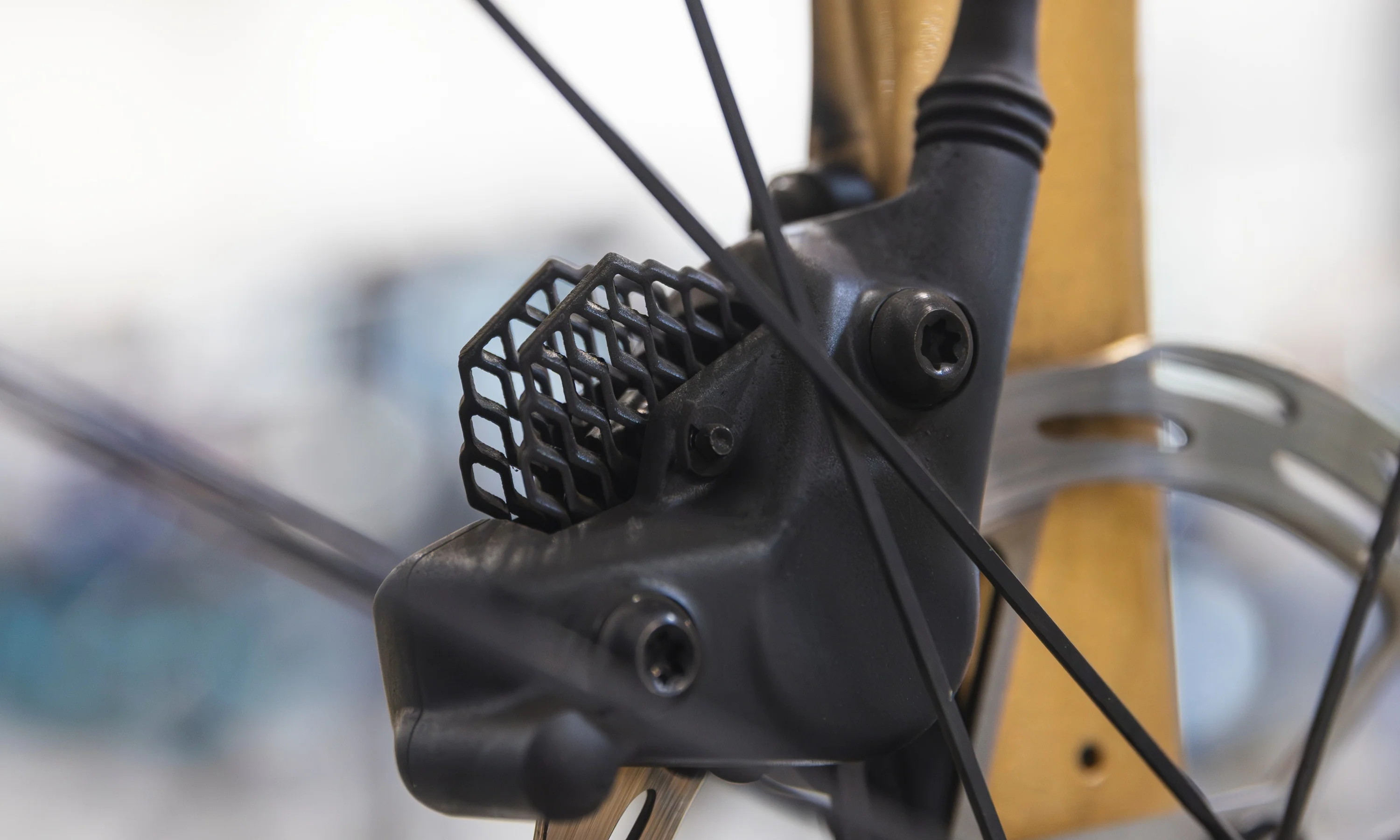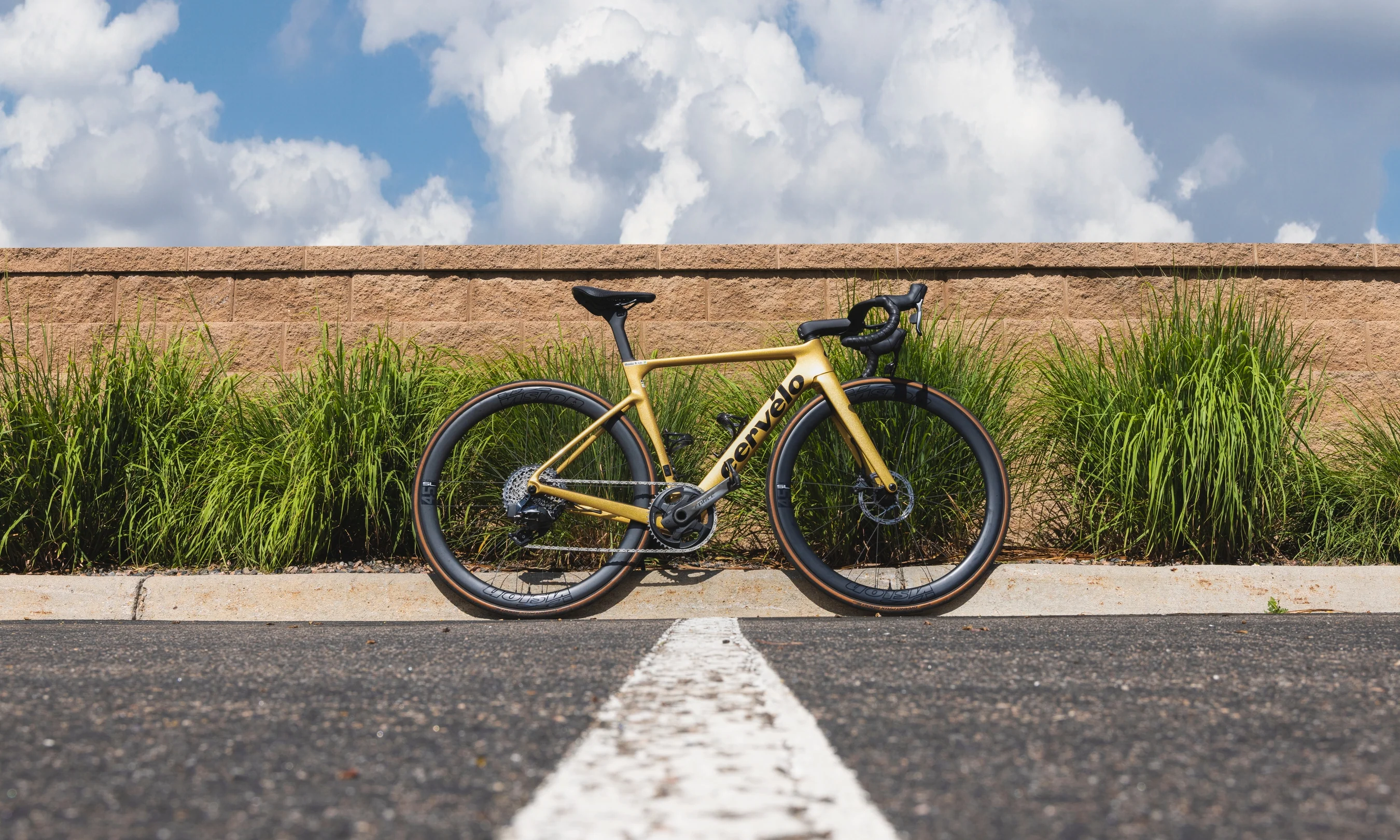
Caring for your road bike might seem intimidating or tedious, but it can actually be fun and rewarding. With just a few tools and a consistent routine, keeping a road bike in good working order is pretty simple. Here’s how it's done.
How to wash your bike properly
At the end of any ride (especially a cold, wet, or dirty one!), the last thing you want to do is get down to business scrubbing your bike. But washing the grit off — especially when it’s been exceptionally nasty — will go a long way toward preserving your bike. Even when it’s been dry and dusty, a bike wash should be part of your routine every few weeks.
Here’s what you’ll need for a basic cleaning:
Soap - $8.45 (you don't need anything fancy!)
Degreaser - $16.95
Bucket - $10
Sponge - $6.99
Gear brush - $6.48
Chain lube (see below for suggestions)

A variety of brushes helps you clean out all the nooks and crannies on your bike.
Before getting anything wet, first, degrease the chain. A spray-on degreaser (such as Bike Hardcore or Muc-Off) works really well. Coat the chain, cassette, and chainrings, then leave that to sit.
Next, get your bucket filled with hot, soapy water. Start at the top of the bike and work your way down. Give the whole bike a scrub with your sponge. If the frame is especially filthy, take your wheels off and wipe down the fork blades and chain stays. Be thorough and scrub the rims, hubs, spokes and tires too.
Now return to the drivetrain. On your cassette, you’ll likely need to use a stiff brush to help out the degreaser. After scrubbing, rinse everything off with soapy water. It helps to have your chain in the big ring as you wipe everything down, paying special attention to all of the components. If they need extra scrubbing, bust out the bristle brush again.

A stiff-bristle brush is key to getting gunk out of the cassette.

It isn't mandatory, but a chain cleaner like this one from Park Tool makes the job a lot easier.
Finally, lightly spray the bike down with a hose to gently rinse away any remaining soap. If you don't have a hose, a general-purpose spray bottle is a great alternative. Avoid spraying bearings directly (i.e., hubs, bottom bracket, and headset) with a high pressure hose. It’s also a good idea to dry everything thoroughly — you don’t want to leave a bike wet. When your bike is completely dry, lubricate your chain and then after letting it sit a while, wipe any excess lube off before you store your bike.
Lubricate your chain
Even if you're only washing your bike monthly, make sure your chain is lubed. It helps to find a chain lube that’s suited to your climate. There are chain lubes for wet, dry, and mixed conditions. Lubing your chain not only keeps the chain in working order, it also preserves the rest of the drivetrain, including the derailleurs.

We like to apply chain lube at the lower derailleur pulley to minimize overspray on the cassette.
Read our complete guide to chains and chain lube. Here are some of our favorite lubes:
Rock-N-Roll Gold - $7.95Rock-N-Roll Extreme - $7.99
Muc-Off Bio Dry - $10.99
Tri-Flow Superior Lubricant Drip Bottle - $10.18
Dumonde Tech Original - $11.15
Inflate your tires
Always check tire pressure before each ride. Now, if you ride every single day, this might seem excessive, but you never know when tires might develop a slow leak. A small puncture could go unnoticed until the end of a ride. Just because you made it back without an issue doesn’t mean you didn’t lose pressure overnight.
Read our complete article about tire pressure.
Inspect your tires for cuts or wear
A quick tire check is always smart, but it's especially worthwhile if you just noticed a slow leak. Slowly rotate each wheel and scan the tire tread for thorns, glass shards, cuts, or debris. Check out the sidewalls to ensure there aren't any cuts too.
Even if there aren't any immediate concerns, it’s good to note your tire wear. Some road tires, like Specialized and Continental, have wear indicators — usually small circular indentations in the middle of the tread. Once the tread wears to the point that these indents disappear, it's replacement time. I’ve been able to get up to a couple thousand miles out of heavy-duty road tires. Lightweight racing tires will wear (and roll) faster. Rough road surfaces and lower tire pressure can also result in faster wear.
SHOP ROAD BIKE TIRES | SHOP PUMPS
Store your bike indoors
You ride your bike in all kinds of conditions, so why does it matter if it sits on a porch or locked up in the backyard? While the elements might not take their toll immediately, they will eventually. Cold temperatures, salt, sand, and moisture will slowly corrode and damage the bike. To get the most life out of your bike and bike parts, keep it indoors and dry. It’s also much safer when it comes to theft!
Key component checks: Rims, brakes, tires, headset, and gears
You don't have to be a pro mechanic, but you should keep an eye on your bike's functions. If something seems off, that could be a red flag.
Tune up your brakes
Spin each tire and pull on the respective brake. Is lever throw (how long until you feel resistance) consistent? Does it feel firm? Note if anything is rubbing, or if it seems like it’s taking more effort than usual to pull the levers. Bleed or replace cables and housing as necessary. Check brake pads for wear.
Pay attention to the chain

It's quick and easy to check chain wear — why not do it more often?
It’s a good idea to keep track of how many miles you’ve put on a chain, at least approximately. Depending on conditions, road bike chains last about a season, which can be anywhere from 1,000-3,000 miles of riding. Better than guessing though, is actually checking your chain wear using one of these tools:
Park Tool CC-3.2 Chain Wear Indicator Tool - $10.75Park Tool CC-4 Chain Checker - $15.55
Pedro’s Chain Checker Plus II - $16.18
Check the rims
When you're assessing those tire sidewalls, take a good look at both sides of your rims to make sure there aren’t any nicks or dings that could alter the structural integrity of the wheel. If your rims are aluminum, watch for dents. If they're carbon, keep an eye out for cracks. Fortunately, unless you ride very rough roads, these issues are rare on road bikes.
Make sure bolts and nuts are tight

Vibrations may cause some bolts to loosen over time. Periodic checks are smart, but always use a torque wrench — unlike the model in this photo!
Every few months, it's wise to make sure that the bike's key fasteners are torqued correctly. Don't simply go by feel. Use a torque wrench and follow the component manufacturers' specifications (usually printed on each part). We recommend checking:
- Handlebar clamp bolts
- Stem clamp bolts
- Seatpost bolts
- Thru-axles (if applicable)
Index your gears
Put your bike in a stand, or have a friend hold the rear wheel off the ground. While pedaling, shift through all of your gears to make sure there’s no skipping or hesitation in the shifting. A properly indexed rear derailleur moves up and down the cassette with equal ease. This can be adjusted with the barrel adjuster on the derailleur, which adds or removed cable tension. To improve downshifts (shifting to bigger cogs) turn the barrel counter-clockwise to add cable tension. To improve upshifts (shifting to smaller cogs) turn the barrel clockwise to reduce cable tension.
If you’re having trouble getting your shifting adjusted or your shift lever feels heavy, your cables are probably cooked. Always replace cables and housing together. The housing can trap grime, and there’s no sense in doing the job halfway. Unless you ride in extremely wet conditions, cables and housing should usually be changed once a year. If you have electronic shifting, then no maintenance is required apart from charging the battery when it gets low.
Always check the headset
If your front end makes a buzzy, rattling noise when it's (gently!) bounced on the ground, you might have a loose headset. This issue could also manifest itself as a knocking sensation under hard braking. Loose headsets are pretty uncommon these days, but as with all of these checks, it's best to catch issues early before they cause damage.
Know which components need to be replaced
Chains, chainrings, and cassettes all wear together. If you regularly replace your chain and keep it clean and lubed, you won't have to worry much about drivetrain wear. However, if a new chain skips under load, or if you notice that your pedaling feels rough or is noisy, your chainrings are likely worn. Also, if your chainring or cassette teeth start looking like shark’s fins, they're probably worn-out.
When it comes to brake pads, you have to be a bit of a detective. Are your brakes squeaking or sounding scratchy? If so, take a look at the pads. If your disc brake pads are down to three millimeters or less, replace them. For rim brakes, the pad rubber usually has grooves. When those patterns are gone, or the pad reaches a marked wear limit line, it’s time for new ones.
SHOP COMPONENTS | SHOP ROAD BIKES
When in doubt, bring your bike in for a check-up
Even with regular cleaning, basic at-home maintenance, and routine bike checks, it’s best to get a professional tune-up every year — or, every season depending how much you ride. A bike shop might catch things that you’ve missed, or have suggestions for avoiding future issues. Plus, it’s good to have a friend at the local shop.

Conclusion
Of course, riding is the most fun part of owning a bike (or several). But it's satisfying to keep things in working order, to know your bike inside and out. Plus, this ensures that you can keep having fun on it. Regular washes and inspections are the simplest ways to make sure you’re not missing something that could turn into a bigger problem. And we practice what we preach! Unlike eBay, Facebook, Craigslist, and even some bike shops, at The Pro’s Closet, we meticulously check and refurbish all bikes that come through our doors. We complete a 141-point inspection and service on every single bike we sell. So you know that when your new-to-you bike arrives, you’ll be ready to go. We want you to maintain your bike so that you can continue to enjoy it in peak form. Enjoy the time in the garage — after all, it’s the pre-party to the big fun.














